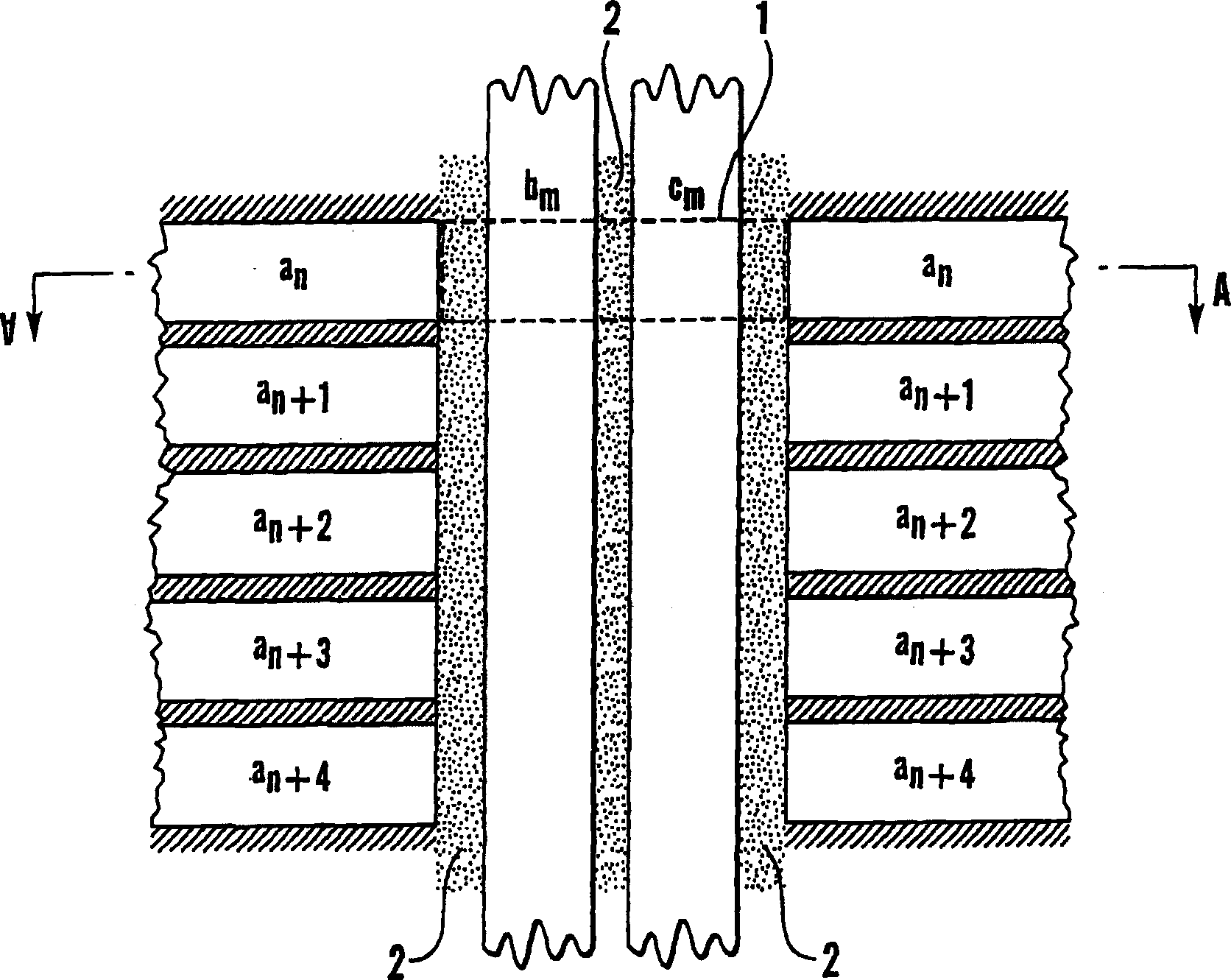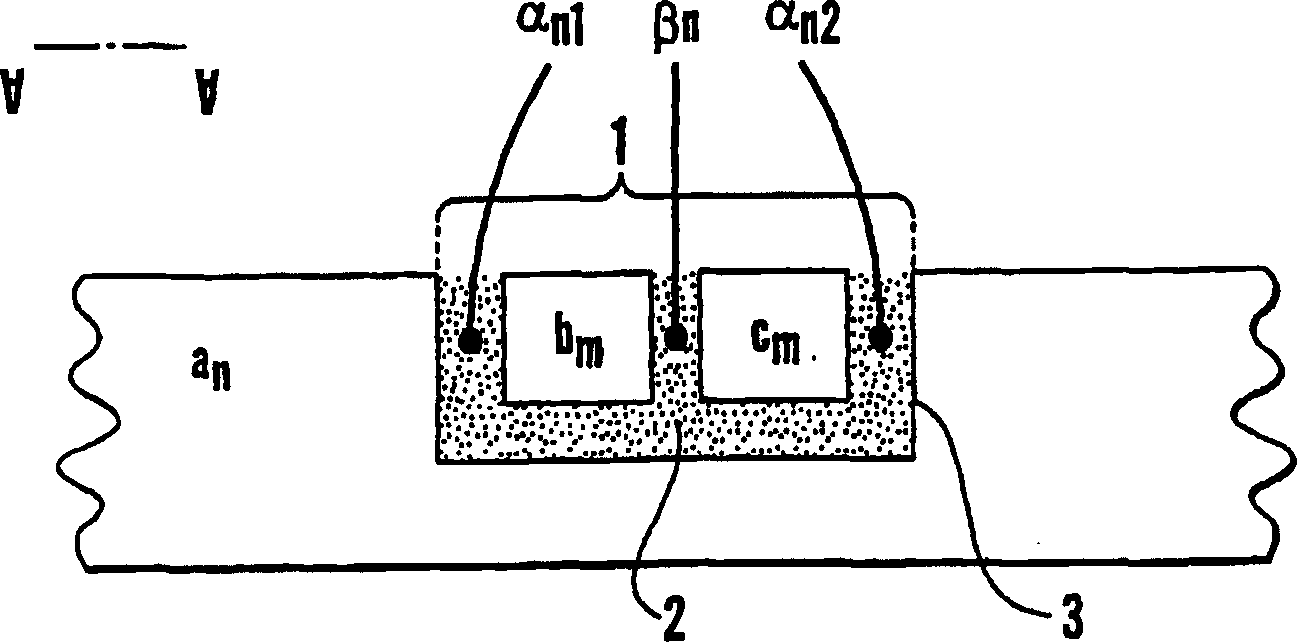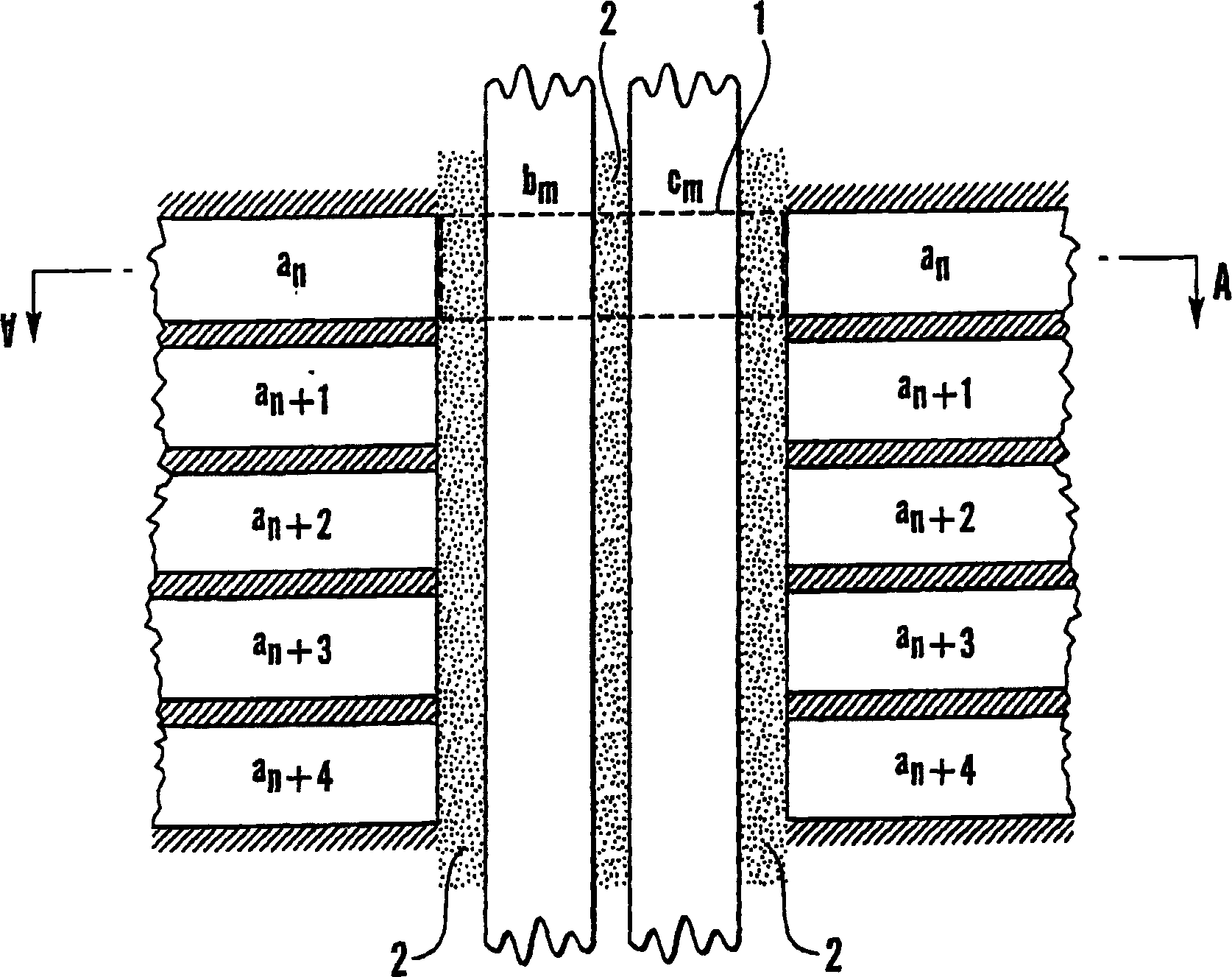Apparatus and methods for nondestructive data storage and retrieval
A technology of data storage device and storage unit, which is applied in the direction of digital memory information, information storage, static memory, etc., and can solve the problems of unspecified access speed, application voltage level, frequency detection reliability and immunity, small signal range performance, Issues such as access time are not indicated
- Summary
- Abstract
- Description
- Claims
- Application Information
AI Technical Summary
Problems solved by technology
Method used
Image
Examples
example 1
[0030] Example 1: Resonant excitation
[0031] Depending on the materials, dimensions and geometry chosen, the vibrations shown in Figure 5 can be excited resonantly. As can be easily determined from the corresponding selection of materials, the free vibrational frequency of the structure shown in Figure 5 with cell widths of micrometer size will be very high, ie in the region of several hundred kHz to several hundred MHz. According to the obtained Q value, it can be m , c m The readout operation is performed with low voltage excitation, thereby minimizing disturbance and crosstalk in the readout signal. Finally, note that the readout scheme in Figure 5 offers the opportunity for massive parallelization and a correspondingly high data output rate.
example 2
[0032] Example 2: Ring-down detection
[0033] If a sufficiently high mechanical Q value is obtained, then in the two-electrode b m , c m The vibrations shown will continue for a period of time after the electronic excitation has been turned off, allowing readout without disturbing the excitation voltage.
example 3
[0034] Example 3: Pulse Detection
[0035] Excitation of double electrodes without sinusoidal or other periodic voltages b m , c m , a single-step or delta pulse can be applied so that α n1 and α n2 Cell compression or expansion. Similar is the piezoelectric spark generator. This provides a very fast readout as the compression sound wave passes over the subunit α n1 and α n2 The transit time is in the sub-nanosecond range in typical memory structures.
[0036] Figure 6a and 6b in plan and along Figure 6a A cross-sectional view taken along line A-A in , represents a memory device that is in many respects very similar to that shown in Figures 1 and 2, except where the dual electrodes b are actuated differently during data readout m , c m outside. Correspondingly, there are certain physical differences in the overall structure and in the process of encoding (writing) and reading data. Now fill the double electrode b with a material m , c m volume or gap between...
PUM
 Login to View More
Login to View More Abstract
Description
Claims
Application Information
 Login to View More
Login to View More - R&D Engineer
- R&D Manager
- IP Professional
- Industry Leading Data Capabilities
- Powerful AI technology
- Patent DNA Extraction
Browse by: Latest US Patents, China's latest patents, Technical Efficacy Thesaurus, Application Domain, Technology Topic, Popular Technical Reports.
© 2024 PatSnap. All rights reserved.Legal|Privacy policy|Modern Slavery Act Transparency Statement|Sitemap|About US| Contact US: help@patsnap.com










